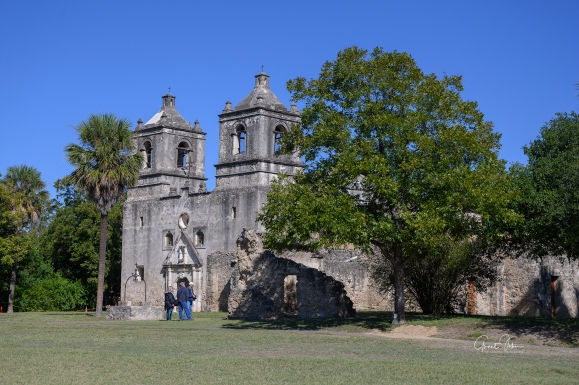If you are a visitor to San Antonio, it is likely you will tour the Alamo, famous for the 1836 battle which led to the establishment of Texas. The Alamo was originally established as a Spanish mission in the earl 18th century, then known as San Antonio de Valero. You are less likely to tour the four other missions located along the San Antonio River south of the city, all established in the 1718-1731 period by Spanish Franciscans intent on converting the native Coahuiltecan tribes to Christianity.
The five missions were named as a World Heritage site in 2015 and are well worth touring. Each was established as a mini-city complete with a church and living spaces for priests and natives alike. Each was surrounded by a wall, and contained farming and cattle raising space with water sourced from the San Antonio River. Weekly masses are still held at each mission, and the buildings for the most part are well maintained.
Mission Concepcion
Dedicated in 1755, the church at Mission Nuestra Senora de la Purisma Concepcion de Acuna remains true to its original design, look and feel. In fact, the church stands as the oldest unrestored church in the US. Exterior paintings have faded, but original frescoes can be seen in some rooms.
Mission San Jose
Considered Queen of the Missions.Established in 1720, San Jose y Miguel de Aguayo is the largest mission in San Antonio. Spanish designers built the mission using Texas limestone and brightly colored stucco. At its height, it provided sanctuary and a social and cultural community for more than 300 Indians. In 2011 it underwent a $2.2 million renovation of domes, walls and the alter background.
Mission San Juan Capistrano
Established in 1732, Mission San Juan’s fertile farmlands used to allow for a self-sustainable community, and its surplus helped supply the region with produce. Today, the chapel and bell tower are still in use.
Mission Espada
The southernmost mission in the series, Mission Espada was established in 1731 and boasts the best-preserved segment of the area’s original irrigation system used to bring water to the fields. Much was restored after a fire in 1826.












































